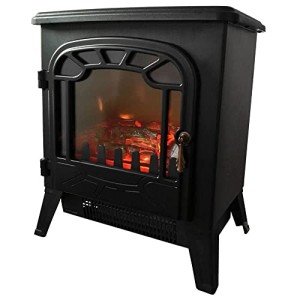A Comprehensive Guide to Small Fireplaces: Efficient Heating and Cozy Living
In an age where energy performance and area optimization are becoming progressively important, small fireplaces have actually emerged as an attractive alternative to traditional, bulky hearths. These compact heating services use warmth and a centerpiece for any space, increasing both comfort and aesthetic appeal. linked webpage explores the various types of small fireplaces, their benefits, setup factors to consider, and maintenance tips, ultimately helping homeowners make informed choices when thinking about these captivating heating options.
Understanding Small Fireplaces
Small fireplaces provide a range of styles, consisting of electric, gas, ethanol, and wood-burning designs. Each type presents distinct benefits and style possibilities, making them appropriate for numerous living areas.
Types of Small Fireplaces
| Fireplace Type | Description | Pros | Cons |
|---|---|---|---|
| Electric | Utilizes electrical energy to produce heat. Provides many designs, consisting of wall-mounted and freestanding systems. | - Easy to set up - Low upkeep - No venting needed | - Limited heat output - May incur greater electrical energy expenses |
| Gas | Burns natural gas or gas. Typically available as logs in a traditional fireplace or modern styles. | - Efficient heat output - Cleaner than wood - Easy ignition | - Requires gas line installation - Some systems require venting |
| Ethanol | Burns bioethanol, providing genuine flames without a chimney. | - Eco-friendly - Portable - No installation needed | - Limited heat output - Higher fuel costs |
| Wood-Burning | Traditional fireplaces that burn fire wood. Frequently utilized in more rustic settings. | - Great heat output - Rich ambiance - Can be used throughout power blackouts | - Requires a chimney - Regular maintenance and cleaning |
Advantages of Small Fireplaces
- Space Efficiency: Small fireplaces are perfect for apartments, apartments, and smaller sized homes. They optimize warmth without using up extreme floor area.
- Cost-Effective Heating: In specific cases, small fireplaces can supplement main heating unit, lowering general energy expenses while creating a more comfortable environment.
- Atmosphere and Aesthetics: They provide a welcoming centerpiece to a room, creating a cozy environment perfect for relaxation and celebrations.
- Adaptability: Available in numerous styles and styles, small fireplaces can complement any decor, from modern minimalist to rustic traditional.
Installation Considerations
When considering a small fireplace, setup is a crucial element that can affect the choice of design. Below are valuable factors to consider:
- Local Regulations: Building codes can vary by area; constantly inspect regional guidelines before installation.
- Ventilation Needs: Depending on the type, small fireplaces might require different ventilation systems. Gas fireplaces might require venting outdoors, while electric models don't.
- Power Source: Electric models need distance to electric outlets, while gas and ethanol designs might require a gas line or fuel storage.
- Weight and Structure: Installing wall-mounted systems may require reinforced wall areas, whereas free-standing designs are simpler to transfer.
Maintenance Tips
Like any other home appliance, small fireplaces need routine upkeep to function effectively and safely. Here are vital maintenance pointers for different fireplace types:
For Electric Fireplaces:
- Cleaning: Wipe down the system with a soft fabric to eliminate dust and keep the heating system ducts clear.
- Inspection: Check the power cord regularly for any damages or signs of wear.
For Gas Fireplaces:
- Annual Inspections: Schedule yearly assessments by a professional to guarantee safe gas circulation.
- Tidy the Logs: Regularly clean the burner and logs to keep optimal performance.
For Ethanol Fireplaces:
- Fuel Storage: Store ethanol fuel securely away from direct sunshine and heat sources.
- Routine Cleaning: Clean the burner after each use to keep efficiency and prevent soot buildup.
For Wood-Burning Fireplaces:
- Chimney Sweeping: Have the chimney expertly cleaned when a year to prevent creosote buildup.
- Firewood Storage: Only usage dry, skilled wood to reduce smoke and promote effective burning.
Often Asked Questions
1. Can I install a small fireplace myself?
While some electric and ethanol fireplaces are fairly simple to install, it is recommended to hire an expert for gas and wood-burning systems to ensure compliance with regional building regulations.
2. How much does it cost to run a small fireplace?
The expense will vary depending upon the kind of fireplace. Normally, electric fireplaces might incur higher electrical energy costs, while wood-burning alternatives can draw from renewable firewood materials.
3. Do I require an authorization for installation?
Permits are typically needed for gas and wood-burning fireplaces due to their installation complexity and security policies. Constantly talk to regional authorities.
4. How long can I run an electric fireplace?
Most electric fireplaces can run for extended periods; nevertheless, it's advised to follow maker standards to avoid getting too hot or damaging the unit.
5. What type of small fireplace is best for a small area?
This mainly depends upon individual needs. Electric models are flexible and easy to install, while gas and ethanol choices offer real flames with efficient heat output.
Small fireplaces represent a practical and stylish alternative for those seeking effective heating solutions in compact home. With different types available, property owners can pick models that line up with their aesthetic choices and space requirements. By understanding the setup processes and regular upkeep needed, people can take pleasure in the convenience and atmosphere that small fireplaces use for years to come. Whether for a cozy night in your home or a welcoming area for events, small fireplaces are an enduring element of modern and traditional design alike.

